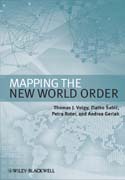
This groundbreaking study maps out and analyzes the development of a global intergovernmental (IGO) institutional architecture in the post World War II era. The rich network of organizations that emerged from the Cold War is systematically compared with the growing web of organizations of the post Cold War period and its acceleration through the remainder of the 20th Century. Combining both quantitative and qualitative methodologies, the authors examine the rangeof reasons why states join intergovernmental organizations and the patterns of participation within these organizations, as well as the consequences of thenew architecture for issues as diverse as conflict amelioration, human rights, and cooperation on natural resources. Ranging over the multifunctional web of global, inter-regional, regional, and sub-regional organizations, this book provides a major contribution to the study of international organization and IGO development.
- ISBN: 978-1-4051-6963-9
- Editorial: Wiley-Blackwell
- Encuadernacion: Cartoné
- Páginas: 296
- Fecha Publicación: 31/07/2009
- Nº Volúmenes: 1
- Idioma: Inglés
